 January 25, 2024 John E. Ross, KD8IDJ, Editor
| |||||||||
ARRL Board Approves Free Membership for Students, New Vice Presidents Elected The ARRL Board of Directors met in Windsor, Connecticut, on January 19 - 20, 2024, for its Annual Meeting.
ARRL President Rick Roderick, K5UR, presided over the meeting, and the Board welcomed Vice Director of the ARRL Great Lakes Division Roy Hook, W8REH, as a newly elected member to the Board. The Board authorized a new, free ARRL membership for students. For decades, ARRL has offered a reduced dues rate for young hams, currently priced at $30 per year. At this meeting, the Board established a new option for a no-cost Associate membership for full-time students aged 21 and younger. The Board re-elected ARRL President Rick Roderick, K5UR, to a fifth 2-year term.
The Board also elected Director of the ARRL Pacific Division Kristen McIntyre, K6WX, to be First Vice President, succeeding Michael Raisbeck, K1TWF.
Director of the ARRL Northwestern Division Mike Ritz, W7VO, was elected Second Vice President, succeeding Bob Vallio, W6RGG. ARRL Vice President of International Affairs Rod Stafford, W6ROD, was re-elected.
The elections of McIntyre and Ritz to the Vice President positions mean that incumbent Vice Directors Anthony Marcin, W7XM (Pacific Division), and Mark Tharp, KB7HDX (Northwestern Division), will succeed as Division Directors, creating vacancies for Vice Director in those Divisions, which will be filled by appointment.
The complete minutes of the 2024 Annual Meeting of the ARRL Board of Directors will be available soon on the ARRL website. Read more about the Board's actions in the ARRL Member Bulletin. The next meeting of the ARRL Board of Directors is scheduled for July 19 - 20, 2024. ARRL is governed by an all-volunteer Board of Directors. Elections are held for five of the 15 ARRL Divisions each year, for terms of 3 years. The ARRL Board of Directors met in Windsor, Connecticut, on January 19 - 20, 2024, for its Annual Meeting. [Sierra Harrop, W5DX, photos] YLISSB Celebrates 61 Years On the Air February 8, 2024, marks the 61st anniversary of the YL System, now known as the YL International Single Side-band System (YLISSB), founded by Vera Mayree Tallman, K4ICA (SK), in 1963.
The YLISSB operates on 14.332 MHz every day of the year. On February 8 - 11, from 1323Z to 1323Z, special event station K4ICA will operate on 14.240 - 14.340 MHz and 7.230 - 7.260 MHz to commemorate the system's 61st anniversary. To receive a QSL card, send a letter via self-addressed stamped envelope to John Ellis, W5PDW, at 26231 Huffsmith Conroe Rd., Magnolia, TX 77354. Dr. Philip Erickson, W1PJE, New Director of MIT Haystack Observatory ARRL Member and active radio amateur Dr. Philip Erickson, W1PJE, is the new director of the Massachusetts Institute of Technology (MIT) Haystack Observatory.
The prestigious scientific appointment is the continuation of a radio interest that began in his youth. "I started as a shortwave listener in the mid-1970's as a middle school student. So, in some sense, I was always fooling with antennas in the back yard and trying to understand why signals got to me at different times -- why were they different in the day and at night? What was the farthest place I could hear, or the closest place?" That early interest led him to an electrical engineering degree and ultimately, a doctorate in space plasma physics from Cornell University that he earned in 1998. Erickson was first licensed as a ham only about 10 years ago, but he says the professional hardware he worked with daily scratched the itch until he could gain amateur privileges. Erickson enjoys homebrewing gear, learning from the foundations of vintage equipment, and using amateur radio in the scientific space. "An intense interest to me that crosses the boundary of what I do professionally and what I do as a radio amateur is what's happening with the HamSCI Collective... Can you use the observations that are already being made in the process of conducting the hobby and extract information from them? It turns out you can -- there's a lot of ionospheric information buried in there," he said. The mission of the Haystack Observatory is to develop technology for radio science applications, to study the structure of our galaxy and the larger universe, to advance scientific knowledge of our planet and its space environment, and to contribute to the education of future scientists and engineers, according to MIT. The facility is home to research projects that span spectrum from VLF to 388 GHz. "We are almost a completely radio and radar observatory... We have a geospace group, which is most-closely associated with ARRL type ideas: the dynamics of the ionosphere and neutral part of the atmosphere, all the way out into near-Earth space. We are an observational group, so we use a bunch of different tools -- radars, radios, sometimes data from satellites, and mostly data from ground-based observations." Erickson enjoys explaining to the uninitiated that amateur radio is not only still an active hobby, but that it is an important space for discovery. "You learn a lot about many different aspects of technical and science work [in ham radio]," he said. While his day job keeps him on the edge of radio technology, Erickson is glad to see amateur radio is keeping pace. He says the coding of WSJT-X digital weak-signal modes such as FT8 and WSPR created by Dr. Joe Taylor, K1JT, are more advanced than most hams realize. "If you were to go to an electrical engineering class, that's what you would see as the edge of how to pack information into a very small bandwidth. I enjoy pointing that out to people and getting them to understand that this other modulation mode is just one of the other palettes that are available."
The MIT Haystack Observatory in Westford, Massachusetts. [Mark Derome, photo] Amateur Radio in the News ARRL Public Information Officers, Coordinators, and many other member-volunteers help keep amateur radio and ARRL in the news. "Radio pioneers: the enduring role of 'amateurs' in radio astronomy" / Physics World (United Kingdom) January 23, 2024 -- Podcast with astrophysicist Emma Chapman about the history of radio astronomy. Share any amateur radio media hits you spot with us. ARRL Podcasts On the Air Maintaining a "junk box" -- a collection of odds and ends that can be used in future projects and repairs -- is a time-honored practice among hams. Every ham radio junk box has to start somewhere, though, and the cover story of the January/February 2024 issue of On the Air, "A Fine Mess: Starting Your Junk Box," by Eric P. Nichols, KL7AJ, offers advice about how to do just that. The January 2024 episode of the On the Air podcast digs deeper by going on location to the workshop of W1AW, ARRL's Hiram Percy Maxim Memorial Station. Station Manager Joe Carcia, NJ1Q, welcomes us into this working space to show us some real-life junk boxes and discuss how they come in handy. ARRL Audio News The On the Air podcast and ARRL Audio News are available on blubrry, iTunes, and Apple Podcasts -- On the Air | ARRL Audio News. Announcements Amateur radio operators will have a unique opportunity this February to participate in the 75th anniversary of the US being gifted 40 & 8 Merci Train boxcars, one of which is located near Las Vegas, Nevada.
At the end of World War II, the Merci Train was sent from France as a way of saying thank you (Merci) for help and supplies that the US sent them during the war. A total of 49 boxcars, each filled with gifts, arrived in the US in 1949. The boxcars were then distributed to each state, including Nevada; the Nevada boxcar arrived in Carson City on February 23, 1949. The 49th box car was shared by Washington D.C. and the Territory of Hawaii. On February 10 - 29, 2024, special event station NV7AL will operate from American Legion Paradise Post 149 to raise awareness of the gift and to celebrate the 75th anniversary of the delivery. For each day of the event, operating times will be from 0000Z - 0000Z on FT8 on 7.074 and 7.250 MHz, and on SSB on 14.074 and 14.250 MHz. On February 24 - 25, NV7AL may operate from the current location of the boxcar in Boulder City, Nevada. Information about QSL cards is available at NV7AL. In Brief... Amateur radio volunteers are needed for the 2024 Boston Marathon. Registration is still open, but the deadline is February 2. A step-by-step sign-up guide is available to help make sign-up easy. Almost all amateur radio positions are single-person assignments. Returning volunteers have received an email from the Boston Marathon Communications Committee of the Boston Athletic Association (BAA) that included registration instructions. In order to make registration as smooth as possible, specific instructions are provided for amateur radio operator volunteers. For questions and more information, email the Boston Marathon Communications Committee at contact@hamradioboston.org. Amateur Radio on the International Space Station (ARISS) is Partner of the Month of the International Space Station National Laboratory, which is managed by the Center for the Advancement of Science in Space (CASIS) at the Kennedy Space Center in The K7RA Solar Update Tad Cook, K7RA, of Seattle, Washington, reports for this week's ARRL Propagation Bulletin, ARLP004:
Four new sunspot groups emerged this reporting week (January 18 - 24). One appeared on each day on January 18 - 21. But, it looks like we may see flares, coronal mass ejections (CMEs) and geomagnetic storms over the next few days. Spaceweather.com identified sunspot group AR3561 as "hyperactive." Sunspot numbers and solar flux declined, and geomagnetic indicators slightly rose. The average daily sunspot number dropped from 167.3 to 130.6, and the average solar flux dropped from 184.1 to 173.3. The average planetary A index rose from 5 to 7.4, and the middle latitude numbers rose from 3.9 to 5.1. Looking ahead, we may see a short-term peak in solar flux around February 11, and another may occur about six weeks from now. Predicted solar flux is 175 on January 25 - 26; 170 on January 27; 160 on January 28 - 31; 170 on February 1 - 2; 175 on February 3 - 4; 180 on February 5 - 8; 190, 190, and 195 on February 9 - 11; 190 and 185 on February 12 - 13; 180 on February 14 - 15, and 175, 170, 175, 175, 170, 175, and 170 on February 16 - 22. Predicted planetary A index is 20, 25, 30, 18, and 10 on January 25 - 29; 8, 5, and 10 on January 30 through February 1; 5 on February 2 - 16, and 8 on February 17 - 18. Glenn Packard, K4ZOT, reported from Atlanta, Georgia, on January 22, that he worked New Zealand on 6-meter FT8 at 0257 UTC. He said, "I just happened to tune to 6 meters tonight after being disappointed on 6 meters throughout the winter season. Then ZL4TT came through at R-19. I called him once, and he came right back to me. The band went dead after the contact." Is Solar Cycle 25 nearing a peak? Read a report about it at https://bit.ly/3Sv70GF. Also, read about some recent solar activity at https://bit.ly/4b6n48Z. You can watch Dr. Tamitha Skov's, WX6SWW, January 22 report at https://youtu.be/41LGqYbxsvk. Her YouTube channel has reached about 84,500 subscribers. Sunspot numbers for January 18 through 24, 2024, were 113, 137, 144, 150, 139, 123, and 108, with a mean of 130.6. The 10.7-centimeter flux was 162.3, 157.4, 166.3, 178.5, 196.1, 180.3, and 172, with a mean of 173.3. Estimated planetary A indices were 6, 8, 6, 6, 9, 7, and 10, with a mean of 7.4. The middle latitude A index was 4, 5, 4, 5, 6, 5, and 7, with a mean of 5.1. Send your tips, questions, or comments to k7ra@arrl.net. A comprehensive K7RA Solar Update is posted Fridays on the ARRL website. For more information concerning radio propagation, visit the ARRL Technical Information Service, read "What the Numbers Mean...," and check out the Propagation Page of Carl Luetzelschwab, K9LA. A propagation bulletin archive is available. For customizable propagation charts, visit the VOACAP Online for Ham Radio website. Share your reports and observations. A weekly, full report is posted on ARRL News. Just Ahead in Radiosport
Visit the ARRL Contest Calendar for more events and information. Upcoming Section, State, and Division Conventions
Search the ARRL Hamfest and Convention Database to find events in your area. Have News for ARRL? Submissions for the ARRL Letter and ARRL News can be sent to news@arrl.org. -- John E. Ross, KD8IDJ, ARRL News Editor
ARRL -- Your One-Stop Resource for
Free of charge to ARRL members...
| |||||||||
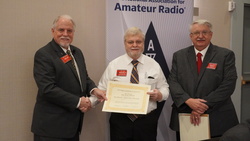
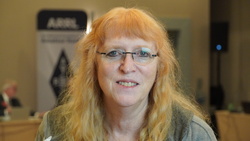
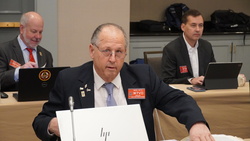
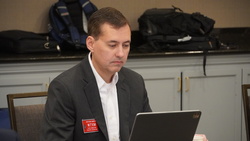
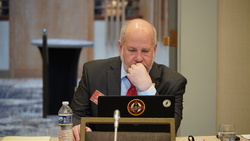
 Tallman received her first license in 1956 and later earned her General-class license. Though the system's name includes "YL," the amateur radio term for "young lady," membership is open to both women and men. YLISSB is a community of radio amateurs who provide support, service, and fellowship to one another and to the rest of the amateur radio community. YLISSB also encourages amateur radio skill development through both personal and system-wide support programs.
Tallman received her first license in 1956 and later earned her General-class license. Though the system's name includes "YL," the amateur radio term for "young lady," membership is open to both women and men. YLISSB is a community of radio amateurs who provide support, service, and fellowship to one another and to the rest of the amateur radio community. YLISSB also encourages amateur radio skill development through both personal and system-wide support programs.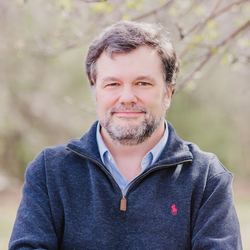

.jpg)
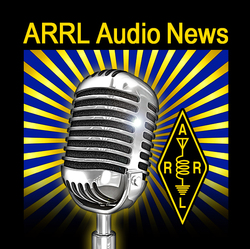 Listen to
Listen to 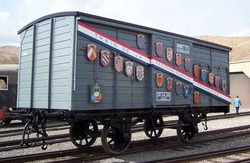
 Florida. Using amateur radio, ARISS offers students around the world opportunities to talk with astronauts on the International Space Station. A primary goal of ARISS is to inspire interest in science, technology, engineering, and math (STEM) subjects and careers among young students. ARISS is a cooperative venture of the Radio Amateur Satellite Corporation (AMSAT), the American Radio Relay League
Florida. Using amateur radio, ARISS offers students around the world opportunities to talk with astronauts on the International Space Station. A primary goal of ARISS is to inspire interest in science, technology, engineering, and math (STEM) subjects and careers among young students. ARISS is a cooperative venture of the Radio Amateur Satellite Corporation (AMSAT), the American Radio Relay League 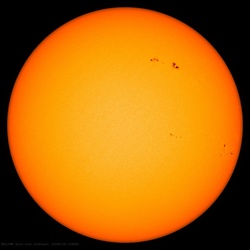
-Blue.jpg)








